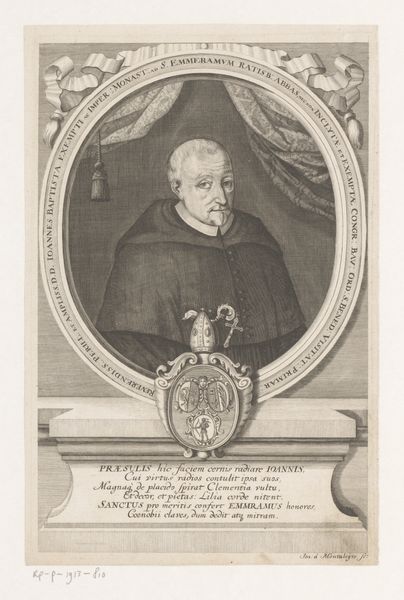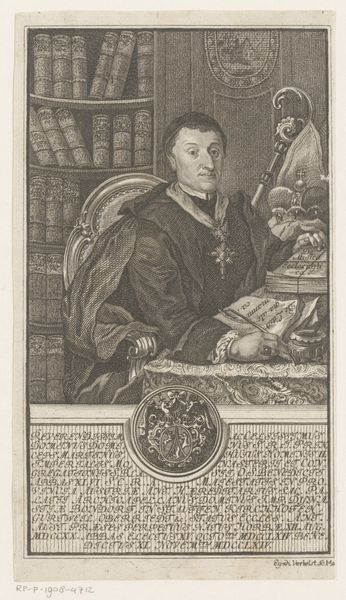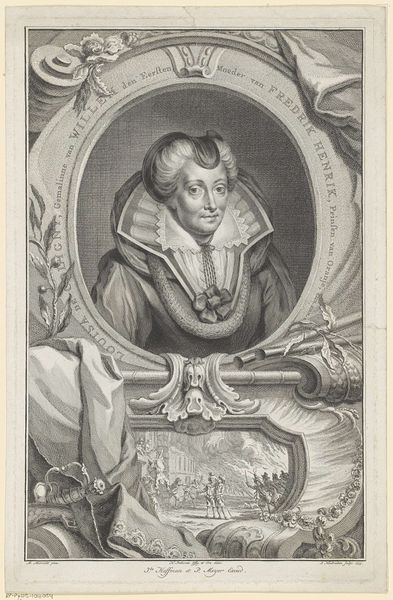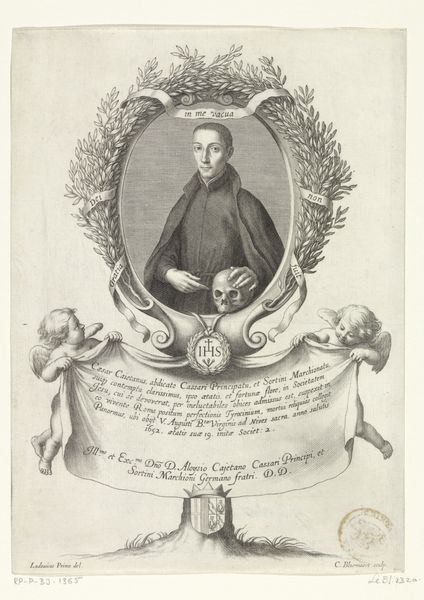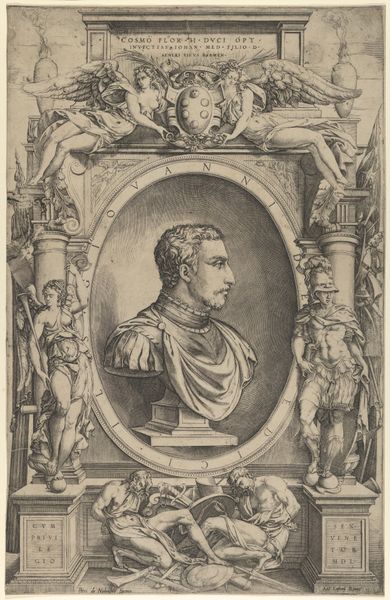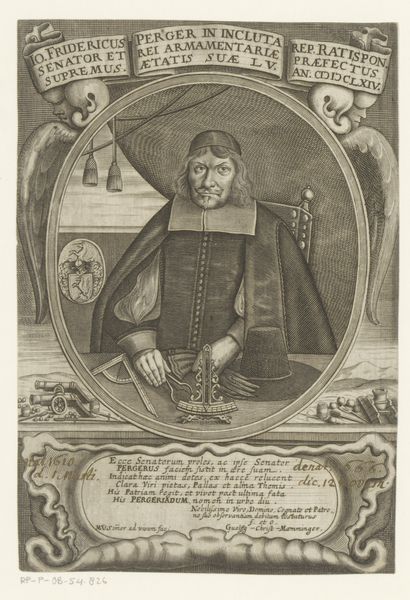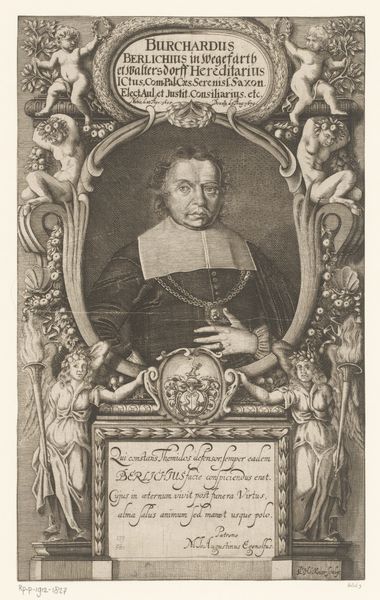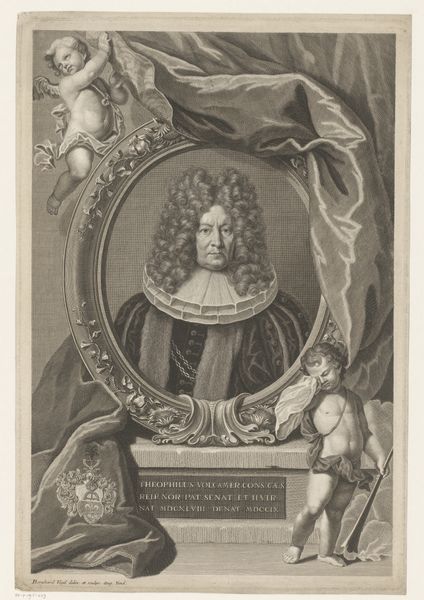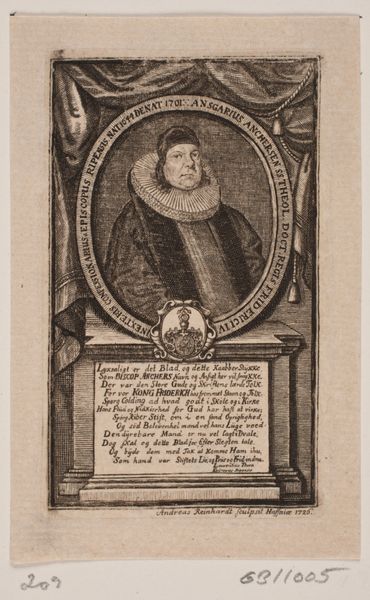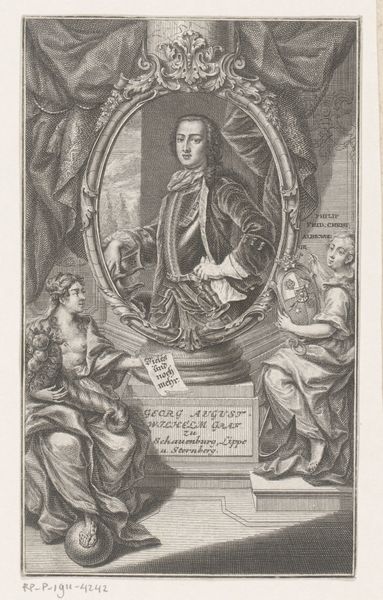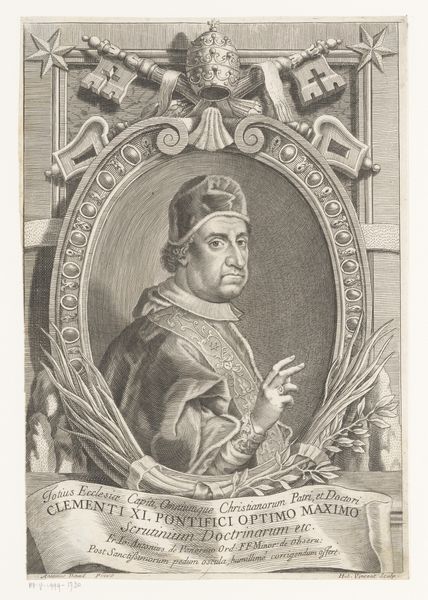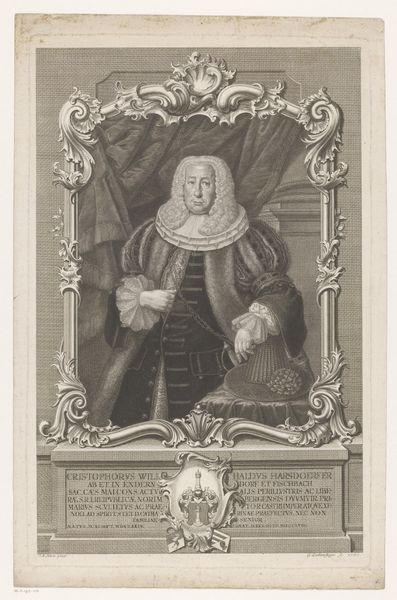
print, engraving
#
portrait
#
baroque
# print
#
old engraving style
#
caricature
#
pencil drawing
#
history-painting
#
engraving
Dimensions: height 308 mm, width 398 mm
Copyright: Rijks Museum: Open Domain
Curator: Here we have a fascinating portrait engraving, “Portret van Placidus, vorst-abt van Fulda,” attributed to Johann Alexander Böner and created sometime between 1678 and 1720. It's part of the Rijksmuseum collection. Editor: My first impression is the incredibly ornate nature of this image. It has an almost dizzying density, with every available space filled with texture or figure. Curator: Indeed. Böner crafted this during the Baroque era, a period that greatly valued ornamentation as a marker of status and power, here manifested as a celebration of Placidus's spiritual and temporal authority. Look at how the cherubic figures and majestic eagle drape a rich cloth, framing his likeness in glory. Editor: I’m drawn to the textures—the almost velvety look of the cloth juxtaposed against the rigid geometry of the pedestal upon which the portrait rests. And the varying densities of line work to create a kind of chiaroscuro effect. Curator: Notice, too, the inscription on that pedestal, detailing Placidus’s titles. The entire piece can be seen as a form of propaganda, reinforcing his power during a time of religious and political upheaval in Europe. Editor: Do you think the cherubs are strictly decorative or might they allude to virtues of this Placidus? Curator: They are certainly doing work as figures representing an ideal and also as framing devices – visually and metaphorically supporting Placidus' image and, by extension, his rule. They project qualities of innocence, divinity, support, and reverence. The eagle too above this man is meant to add symbolic weight to his status and project an aura of power. Editor: It strikes me how the almost cartoonish style, particularly of the cherubs, contrasts with the realism in Placidus's face. It's like two different artistic languages coexisting on the same plane. Curator: That contrast emphasizes the different aspects of his identity - the ethereal divine combined with grounded earthiness. Engravings like this played a crucial role in shaping public perception and preserving the images of powerful figures. Editor: This portrait seems not only an object of devotion but also a shrewd exercise in controlling legacy and political presence. Curator: Agreed, observing Böner’s work is truly like viewing a Baroque power play meticulously etched in ink. Editor: This work serves as a reminder to see beauty and craftsmanship not merely in the aesthetic execution but the understanding that all pieces emerge from complex contexts with complex intention.
Comments
No comments
Be the first to comment and join the conversation on the ultimate creative platform.
